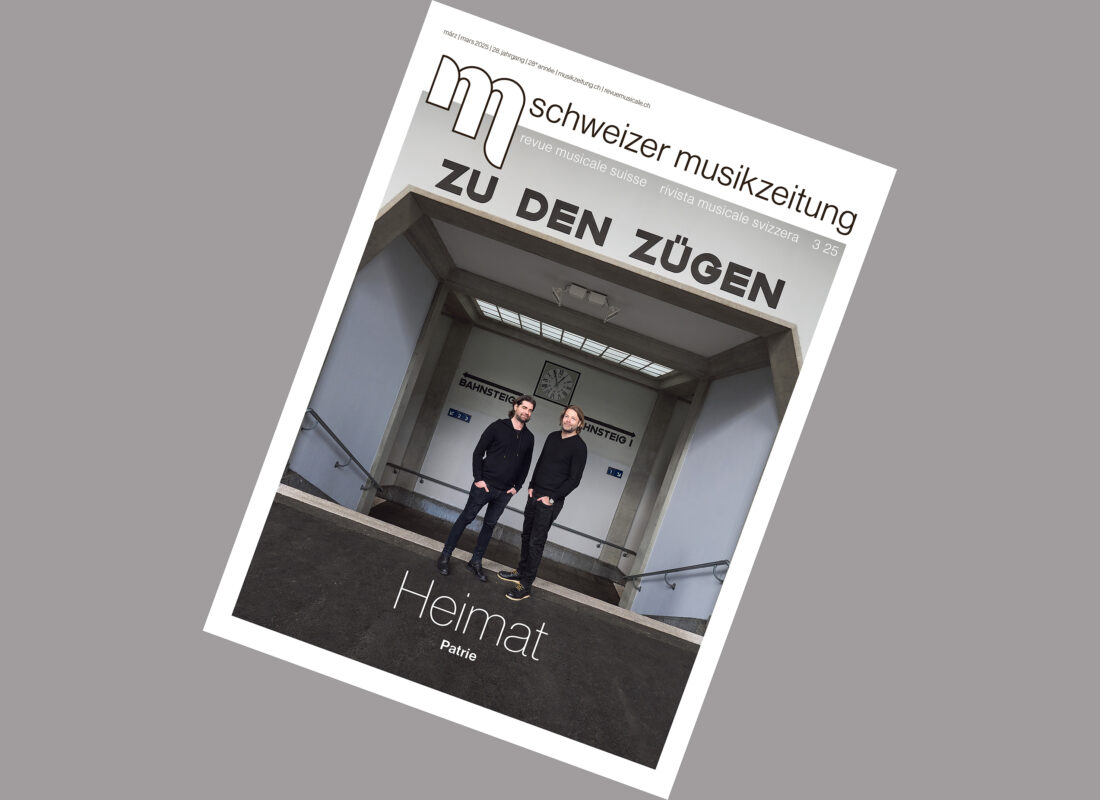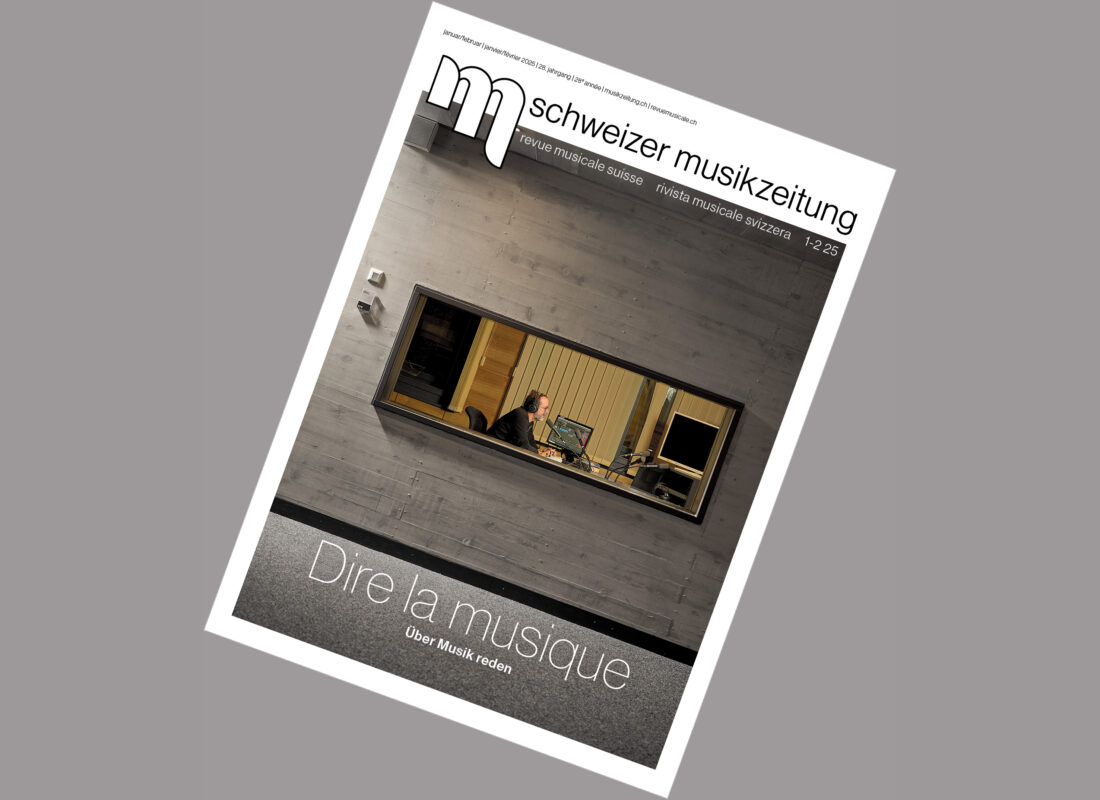Hypnotic solutions for musicians
Is hypnosis suitable for musicians? Based on two problem areas - stage fright and motor complications - successfully tested hypnotic and hypnopedagogic solutions are outlined against the background of the current state of knowledge.
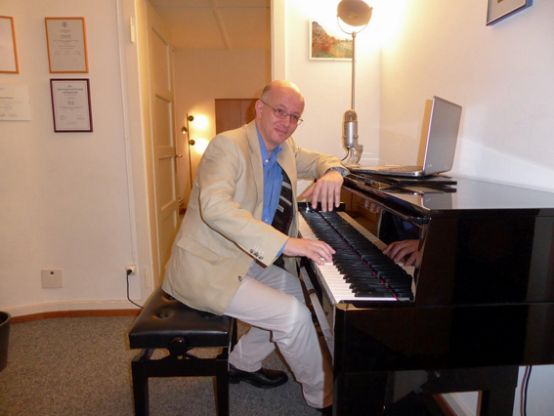
Is hypnosis suitable for musicians? Based on two problem areas - stage fright and motor complications - successfully tested hypnotic and hypnopedagogic solutions are outlined against the background of the current state of knowledge.
Psychologists experienced in hypnosis (1 – Editor: Notes at the end of each text section) and doctors are not surprised by a finding that has been repeatedly highlighted at the world's largest specialist congresses on hypnosis in recent years - for example in Bremen and Paris: Trance-inducing (2) Circumstances facilitate the use of hypnotic procedures and effects. This even applies to unpleasant Forms of trance, so-called "problem trances": Many dentists who work with hypnosis to reduce anxiety or anesthesia describe how much the anxious and expectant attention of the patient before the dental procedure facilitates the transition to the desired hypnosis. Situations in which trance-like states occur of their own accord are also suitable as a framework and trigger for post-hypnotic hypnosis. (3) Reactions. How significant and effective the effects are depends not only on the client's ability to be hypnotized, but also on the competent, highly flexible implementation of hypnosis, taking into account the personal and situational circumstances. The recent inflationary offer of apparent hypnosis applications, which often consist of simply reciting or even reading out standard texts, obscures the impressive possibilities of expertly performed hypnosis.
It is obvious that musicians in particular are familiar with both unpleasant and exhilarating trance states - not only because they are absorbed by the performance situation and the recall of extended memory sequences, which represent a kind of "hypnomorphic event", but also because they are immersed in the music. Let's look at the last case in a kind of mood picture: we are sitting in a concert hall. The piano sounds from the stage had already captivated us, the listeners, in an enchanting way right at the beginning and occupied our full attention. We are led along the enchanting paths of a great work. The paths seem to gradually lose themselves in remote realms until we realize that even the side paths and detours take us more and more up to enchanted heights. Now you can also sense how the musician draws breath there, as it were, and rises far above the land in order to be able to spread his wings more freely for unwavering flight, the evening star like a distant beacon in his gaze. And somehow the immersed audience understands the artist on stage - also understands this dichotomy: to create what sustains him. To give power to the music that comes from the music. The audience perceives how, at the grand piano, the doing and the letting happen can hardly be distinguished, while at the same time, as now in the hall, everything external recedes.
Now, one would not want to speak of an actual hypnotic process or state in either the pianist or his audience. That would also be inappropriate and, moreover, presumptuous - if only because music has to do with the deepest truth, which is eternally beyond the reach of all thought and speech and defies any reduction to anything else. Nevertheless, the peculiarities of what happens and is experienced in hypnosis show that some related traits. This also allows us to understand that a great musician like Rachmaninov, in severe crisis, was able to benefit so much from hypnosis that he dedicated his 2nd Piano Concerto, written after his treatment, to his hypnosis doctor, Nikolai Dahl. So what related traits are meant? Something like this: To be deeply immersed in a contemplation or perception, fascinated by it, moved to changed attention, which is ultimately directed more inwards, whereby other things recede, with a changed perception of time and body, wandering in a border area between doing and letting things happen: That would be a thoroughly typical description of the experience of hypnosis. In hypnosis, however, alertness is often - but not always - reduced: In the course of medium-deep, i.e. normal clinical hypnosis, there are often longer phases during which you feel as if you are about to fall asleep, in a kind of dreamy or daydreamy state, where you tend to think in images, often no longer listen carefully and yet perceive that, for example, announced physical reactions occur as if automatically. You then observe that something is happening to you that is not dependent on conscious control.
What are the benefits of such hypnotic experiences? Well, they are particularly effective in changing patterns of experience and behavior as well as vegetative and muscular reactions. In hypnosis, it is easier than in a bright waking state to leave behind ingrained, repetitive patterns of thinking, feeling, perception or behavior, at least on a trial basis, in order to turn to something new. This increases suggestibility (especially in the context of desired and natural reactions) and facilitates access to feelings - and through these also to episodic memory. The "silent observer" in the background always remains present and is always able to end the state. This is an important fact that has been proven by various empirical studies: no one can be induced to act in hypnosis that they would not be able to accept when awake. If a show hypnotist makes someone walk like a dog on all fours or pull the tie of the grey-haired gentleman in the front row, etc., then the subject has - demonstrably - realized what he is doing and could have refrained from doing it. In this case, however, it is the case that he is showing a socially desirable behavior - namely by the hypnotist as well as the audience - which is also considered to be excused "by the hypnotic state" and for which he receives applause afterwards. Such fears can therefore be set aside without further ado when one sets out to use hypnosis as an instrument for dealing with legitimate concerns.
We will now turn our attention to two topics that are of particular importance to musicians: Stage fright and motor complications.
Notes 1 to 3
1 The shorter, masculine form is used here, although of course women and men are referred to equally. This - as well as these notes - is intended to help smooth the language of the text.
2 Trance" refers to states of altered consciousness, e.g. narrowed or expanded attention, changes in body and time perception, greater closeness to feelings, etc.
3 These are desired reactions that are prepared or created during hypnosis so that they occur automatically in the intended context.
Stage fright
Let us first recall the statement we made at the beginning that trance-promoting conditions facilitate the use of hypnosis. We used the example of an invigorating and uplifting "trance" - in a great concert - to illustrate some of the features related to hypnotic trance. Let us now turn to a completely different situation, more akin to the aforementioned dental problem trance, typical of musicians: the performance. Here, too, we find - even in the frequent case of rather mild, stimulating, firing forms of stage fright - the absorption of attention by the situation, the withdrawal from other perceptions, the altered sense of body and time and an experience that things are happening that we cannot control. The latter is particularly noticeable with more pronounced stage fright or even actual performance anxiety (for this somewhat artificial distinction, see Spahn et al., 2011, p. 150): Palpitations up to the neck, cold and wet hands, soft knees, restricted field of vision, dry mouth, shallow breathing, tension - in other words, the various physical correlates of anxiety, whereby the ability to concentrate at will, often also self-confidence, is also reduced and memory access may be impaired. For the time being, we only want to note this here: The symptoms, which can have a very negative effect on performance, at least in this severe form, are a perfect example of what we described above as a problem trance. And it is precisely this - initially disturbing - condition that can be useful for the use of hypnotic effects, as will soon become clear.
The prerequisite for successful performances of any kind (not just musical ones) is, of course, always mastery of the program to be performed. However, measures can already be taken during the preparation of the program to defuse the impending performance situation on the one hand and to "repurpose" what cannot be defused in a target-oriented way on the other. Hypnosis-supported interventions must be preceded by an initial discussion - with a doctor or psychologist working with hypnosis - in which the individual problems, previous performance experience, resources, practice and biographical circumstances are discussed in detail. Only then can the procedure turn to the following options, for example, which do not always have to be applied, but can be considered facets of a very effective overall concept:
A)
In hypnosis, it is first possible to create a pleasant state that is opposite to the (unpleasant) experience of stress on stage, which can nevertheless be modeled in the direction of the required agility, presence and flexibility. In a further step, the idea of the stage and the audience should be added to this anxiety- and stress-free, but nevertheless agile state, while constantly checking and restoring the - physically and mentally - desired experience. This achieves an associative reorientation: instead of the previous connection between the stage situation and stage fright, the connection with the desired, relaxed experience is established. The target state is therefore not achieved here through habituation, but is brought into the stressful situation in the as-if reality of the trance, which is thereby neutralized or "re-experienced". Although this procedure can be deepened and consolidated through occasional repetition at home - by means of simple self-hypnosis procedures - one important circumstance must nevertheless be taken into account: the fact that it is usually not possible to prevent at least a rudimentary occurrence of nervous symptoms at the beginning of the actual performance (except in the case of clients who react particularly strongly to hypnosis and direct suggestions). Frivolous - and therefore misunderstood - "positive thinking" is almost always counterproductive here. You have to focus on the nervous symptoms set and by no means want to prohibit this immediate manifestation of stage fright at the root. Otherwise, you will once again enter the notorious circle of anxiety that was already responsible for the symptoms: nervous body symptoms ---> aha, so it didn't help after all --> anxious expectation of further dysfunctional reactions ---> intensification of the symptoms --> increase in errors and memory failures ---> etc. etc. The aim must therefore be to successfully cope with the emergency situation even if signs of stage fright are already present! Points B) and C) describe how this should be done.
B)
Only with due caution and in preparation for the following point C: fear or stress should be experienced in front of an imaginary audience in the as-if reality of the trance, with a successful game - i.e. success in a state of stress. The aim of this approach is therefore to remain capable of acting under stress and anxiety.
C)
Hypnotic procedures for emotional transformation: transforming stressful, paralyzing feelings into inspiring, invigorating, confidently released feelings - from stage fright to Olympic fire, so to speak. Once this is sufficiently established in hypnosis, the signs of stage fright felt during the performance, i.e. the incipient "problem trance", serve as an anchor and entry into the hypnotically practiced emotional transformation. In other words: if the problem trance does not occur on stage, we do not need to transform anything. However, if a problem trance occurs (here in the form of stage fright), the resolved target state linked to this problem state in hypnosis is activated. Incidentally, there is nothing unnatural about this: it is basically the same process that many successful musicians have experienced on stage for centuries. This kind of repurposing and reshaping of the problematic experience then also facilitates the necessary refocusing of attention on the music.
In A) and C) in particular, actual relaxation suggestions will also play a role. However, they should be designed with the necessary caution, as the performance represents a performance-oriented framework: There you do not have to enter into the deepest, most relaxed calm, but rather relate the relaxation aspect mainly to muscular looseness and free presence, which can then also be available in the highly alert and concentrated situation in and of itself.
D)
Resource-oriented (and therefore truthful) correction of self-deprecation and excessive self-doubt. Suitable personal resource experiences can usually be found and activated much more easily in hypnosis (Bongartz & Bongartz, 2000, p. 232). In this respect, it is also important to reflect on one's identity as a musician who, despite all possible inadequacies, is always involved with the noble, deeply meaningful event of music, which - as an inner concern - is part of one's personality. It is certainly helpful to remember events in which famous musicians made the greatness of music emerge all the more poignantly even from the abyss of wrong notes. Piano players may think of Cortot, for example.
E)
Direct suggestions are also always given in hypnosis - that everything you have learned is available, that you are calm, clear, concentrated, etc. - The symptoms of the problem trance can in turn be used as an anchor to establish this certainty punctually on the stage. This can be done, for example, by using the onset or increase in symptoms as an anchor when entering the stage. The person concerned then notices how the sense of purpose created in hypnosis occurs when crossing the stage.
F)
Use of self-hypnosis to further establish what has been described so far, but also for habitual muscular relaxation and improvement of body awareness - even while playing (both at home and at the gig).
Stage fright: facets of hypnotic intervention
After clarification of the individual circumstances (preliminary discussion):
- Associative reorientation regarding the stage situation
- Increase your ability to act under stress
- Emotional transformation (with anchoring regarding performance)
- Resource-oriented correction of self-doubt
- Direct suggestions in hypnosis
- Self-hypnosis methods for independent further work
How much time can be expected in total? If we disregard flash successes with particularly suitable subjects who appear in the practice only days before the performance and suddenly enter the stage without any problems after a single classic hypnosis session - with direct suggestions (the author has relevant experience with this), then the following can be said: Often one will manage with 4 to 6 sessions at intervals of e.g. one week each, unless more extensive work with the past, for example due to unconscious conflicts, is indicated. In any case, there should also be a debriefing after the session - also in order to agree on suitable training elements for further independent work using self-hypnosis.
Motor complications
Observing the extreme, derailed and problematic facilitates the recognition of fundamental mechanisms, suitable models and solutions: this is a fact that has not only repeatedly impressed itself on the author during years of clinical and teaching work as a psychologist in psychiatry - the history of all natural sciences and humanities disciplines also teaches us this. The following problem area also proves to be comparable.
Musicians are familiar with a wide variety of motor impairments that repeatedly require instrumental pedagogy, sometimes even medical treatment. (4) demand attention. Many of these impairments have to do with tension, and some with obvious problems with movement control. An impressive and increasingly present topic is "musician's dystonia", which is an activity-dependent focal dystonia - i.e. a disorder that manifests itself in unwanted, to a certain extent misdirected muscle contractions.
This is by no means an attempt to provide a comprehensive outline of the topic or a systematic overview of current empirical studies. Rather, the aim is to point out additional and promising ways of intervention based on relevant experience, accompanied by some comments, including critical ones, on the interpretation of the findings known to date. This seems all the more justified as research is still a long way from an adequate clinical and theoretical understanding, which is also reflected in the extremely limited treatment successes to date.
Around 1% of all professional musicians suffer from musician's dystonia at some point in their lives, at least in Germany (Spahn et al., 2011, p. 206). In principle, musicians of all instrumental genres are affected. Nevertheless, the description here will be limited to hand dystonia, which is particularly common in pianists. However, at least the basic aspects can be applied analogously to other instruments and the voice. In pianists, the symptoms, which are also clearly visible from the outside, consist mainly of incorrect movements - usually of the fingers of the right hand - on the instrument, which severely disrupt the intended sequence of movements. This involves movements that were previously mastered at high speed and fluently, such as playing scales. It is noteworthy that these incorrect movements are activity- and context-dependent, which is why they are also referred to as "focal task-specific dystonia" (Frucht, 2015): Thus, very often in the air, on the tabletop or (more rarely) even on a simple keyboard (without proper piano mechanics) the correct movements are readily possible.
Let's look at an example: Here we have a piano student in a higher semester who has so far shown quite convincing pianistic skills - both musically and technically. One day he complains about difficulties in playing scales: the index finger of the right hand would involuntarily curl up when the thumb was underneath, or sometimes the middle finger would suddenly stretch out. The initially somewhat carefree teacher soon realizes that the symptoms cannot be denied and that they do not improve or are only temporary. Then it gets worse, and teachers and fellow students attribute this in part to external stress factors, which the student doubts, at least in principle - and rightly so, as the latest research shows (Ioannou et al., 2016). Technical exercises are recommended, and the beginnings of avoidance behavior emerge: students switch to more chordal pieces, or at least pieces with few scales, which are mastered better despite an increasing tendency towards unfree, cramped playing. However, the difficulties spread to other technical figures. Medical help is then sought, although the neurological examination does not reveal any pathological findings. After unsuccessful attempts with physiotherapy, Alexander technique and other alternative medical procedures, he switched to another excellent teacher and pianist who was used to the stage, and underwent a lengthy psychoanalytical intervention. Nevertheless, to the astonishment of everyone around him at the conservatory, the continuation of his studies gradually became questionable. In the end, he dropped out.
Note 4
At this point, a warning should be sounded before attempting to suspend the instrumental pedagogy through the therapeutic in the narrower sense: the abnormalities and obstacles discussed here can be understood - as will be shown - as higher-grade manifestations or continuations of phenomena that initially concern the teacher (see also the continuum thesis presented in the text). After all, the instrumental teacher is the first to encounter the abnormalities and will determine whether they are still within the field of the technical playing problems to be dealt with or whether something has taken on a life of its own, i.e. could be pathological, and then requires medical attention. Whether the argument is preventative or therapeutic: Not every play-related problem is a case for the doctor. But every such problem always remains an instrumental pedagogical task.
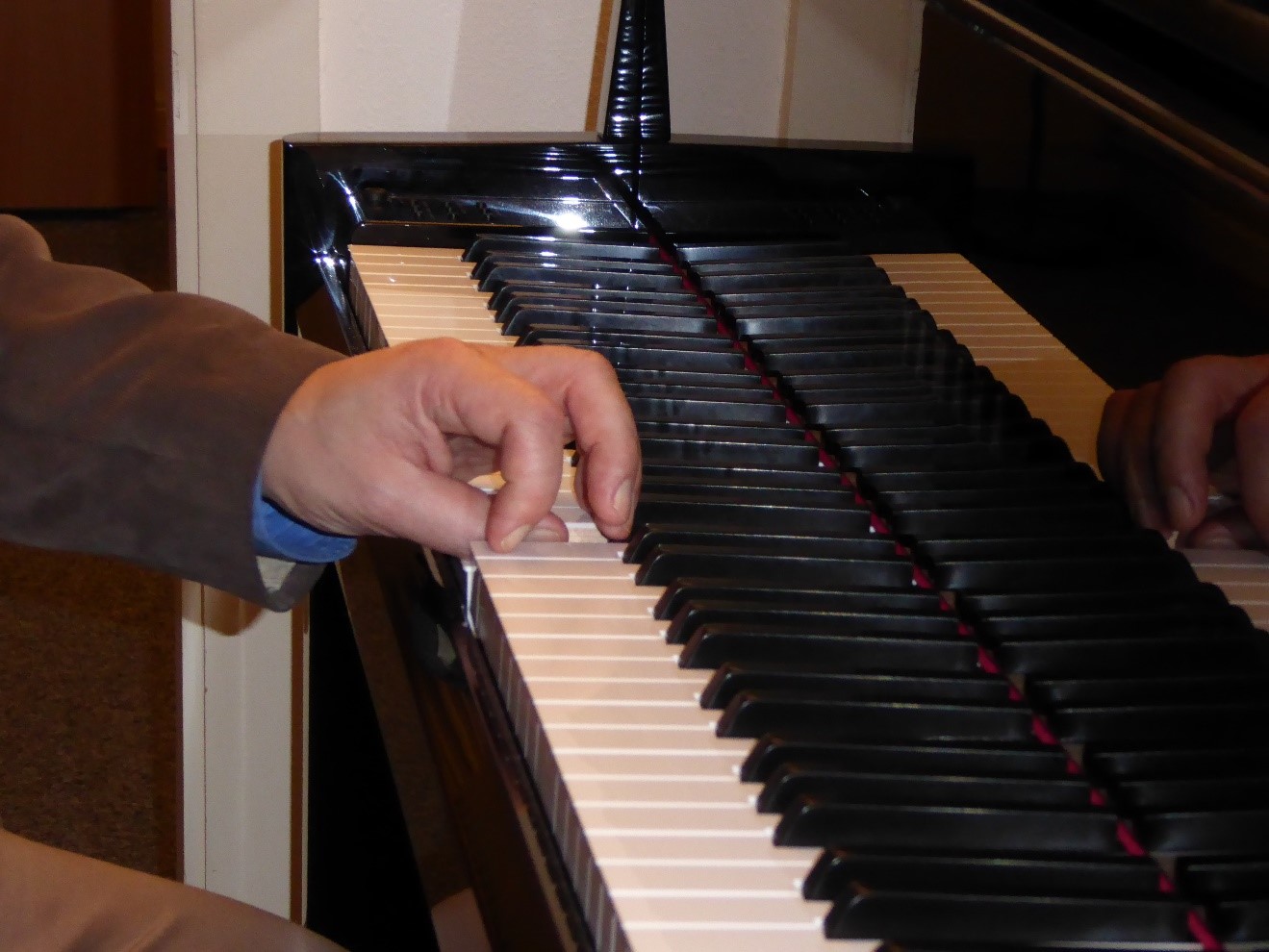
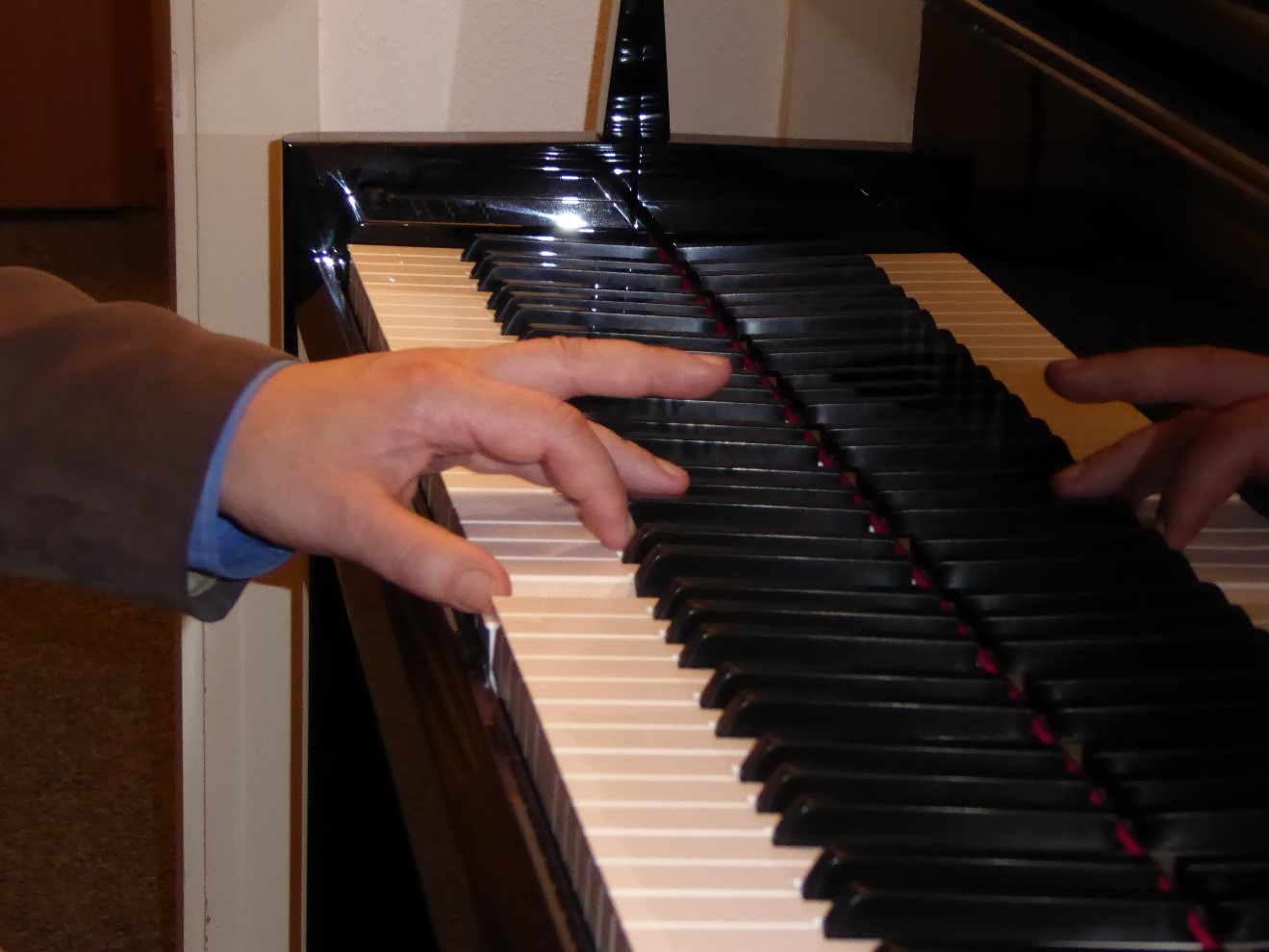
As already mentioned, similar phenomena can also be observed in players of other instruments. The findings of decades of research are inconsistent and unclear and the prescribed therapies show fluctuating, generally unsatisfactory results. What does research - in brief - have to say on the subject?
Studies have shown that players with a particularly high practice workload develop dystonic symptoms more frequently (Rozanski et al., 2015), but lack a clear explanation for this. Neuroscientific studies have a lot to say about the neuronal correlates of the problem. Among other things, there is talk of an inhibition deficit (Pandey, 2015): The muscular counterparts (antagonists) of the finger currently being moved are not inhibited enough, so that the finger is flexed and extended at the same time, which leads to stiffness. Imaging techniques reveal an overlap or fusion of the motor areas, e.g. of the neighboring fingers (Spahn et al., 2011, p. 208; Paulig et al., 2014). The area in the motor cortex that controls the index finger now also partially controls the middle finger and so on. In therapeutic terms, it has been found that putting on thin latex gloves can alleviate the problem - but usually only temporarily: This is the so-called "sensory trick" (Paulig et al., 2014). The very precise, targeted injection of Botox into some muscles also brings about such temporary improvements and is now the mainstay (Pandey, 2015) of standard therapy, which also makes use of various educational retraining procedures. However, even with years of retraining, the prognosis is extremely poor (Spahn et al., 2011, p. 214). Breaks from play or even acupuncture, physiotherapy, electrotherapy, massages or psychotherapy have proven to be ineffective in the long term (p. 213).
Now let's take a look at the whole thing from a piano pedagogical perspective. The legendary pianist and piano teacher Josef Hofmann (1876-1957), long-time director of the elite Curtis Institute of Music and teacher of Shura Cherkassky, was in both illustrious and numerous company when he preached: "Slow practise is the only way to become proficient." The same Hofmann now describes in his excellent book Piano Playing (Hofmann, 1920) impressively demonstrates the serious symptoms that can result from practicing too quickly: paralysis-like symptoms, finger blockages, or motor reactions of fingers that should not be moving at all, etc. He explains how this occurs, without using neuroscientific jargon of course, as follows: With rapid repetitions of complicated figures, small mistakes, slips and uncleanliness would escape our attention, blur the tonal image in our imagination and, with continued practice of this rapid repetition, lead to "indeterminate nerve contacts" (p. 38 f.), making it increasingly unclear which finger should move. And the problem was not at all localized in the fingers, but exclusively in the mind - in a "confusion of the mental concept" (p. 39). If, from today's perspective, we were to ask how this confusion of finger assignment could be reflected in the brain, even the neuroscientific layman would be reminded of the above-mentioned overlapping of the motor areas in the brain. This merging or overlapping of the motor areas could then be understood as a sediment of the accumulated uncleanliness during practice - a result of unfavorable learning processes. Someone who has extensive experience with focal dystonia of the hand could, with a view to an electro-acoustic equivalent, speak of a "reduction of the external tension distance", but in piano pedagogical terms of a "(re-)acquired dependence of the fingers". The old-fashioned concern of playing technique to achieve the greatest possible independence of the fingers means nothing other than this: that intended finger movements should have as little muscular effect as possible on other fingers. In electro-acoustic terms, one could say that the greatest possible difference between the useful signal and the interfering signal (noise and impulse-like interferences) should be minimized. (5) is aimed for. And it is precisely this difference that is reduced by the unfavorable practice mentioned above: "noise" (undirected movements, tension) and increasing "impulse-like interferences" (incorrect movements) in the signal path are accepted when playing too often at high speed, until a habitual sensomotoric (6) This is a harmful perceptual and behavioral disposition that now infiltrates all further actions on the instrument and thus continues to be practiced. Measures that change proprioceptive perception when playing - e.g. sensory trick and Botox injections (the latter with additional relief of the final stretch through relaxation: a kind of "noise suppression") - can bring about a temporary improvement: Recall the context dependency (7) of the symptoms. At the same time, however, this masks the actual problem (which is localized in the head, not in the fingers) of the sensorimotor disorder and thus encourages the careless continuation of the unfavourable habit: This is because it temporarily increases the tolerance of the playing apparatus to the sensorimotor disinclination. It can now tolerate a little more carelessness and negligence, until you notice the audible and visible symptoms. The player then believes he is on the road to recovery and will continue to practice too quickly and kinaesthetically carelessly until this tricky reserve is exhausted. This behavior is all too understandable: the desperate player feels relief, thinks "aha, finally I'm okay again" - and plays on as before. (8)
If we now ask what possibilities the use of hypnosis opens up to us for overcoming focal dystonic problems, we should first of all remind ourselves of what is to be corrected. The aim is to correct the (context-dependent, task-specific) reduction in the "external tension distance", which corresponds to an acquired dependency of the fingers. This also means a correction of the unfavorable perceptual and behavioral disposition, i.e. the sensorimotor misalignment. It also follows that fundamental instrumental pedagogical and didactic aspects for optimizing and developing playing technique - namely in the direction of increasing finger independence - are arranged on the same continuum as the elimination of dystonic symptoms. So if we want to increase the signal-to-noise ratio and thus promote the independence of the fingers, we must first look at the obstacles that stand in the way. The obstacles are everything that makes it difficult to perceive and correct the incorrect tensions and movements: speed and kinaesthetic inattention. However, hypnosis opens up the possibility of altered, e.g. increased, body awareness, which can also be used post-hypnotically, whereby the setting of anchors and the use of self-hypnotic procedures are useful. This allows subtle tensions and movements to be perceived in good time - as they arise - and then refrained from or corrected. This can only be achieved by playing slowly - especially by repeating figures that are prone to dystonia slowly and with constant, attentive correction. The possibility of particularly vivid imagination in all sensory areas in hypnosis can be used for trouble-free, correct performance in the as-if reality of the trance, which prepares and facilitates the subsequent work on the instrument. When playing, it is advisable to ensure the greatest possible flexibility ("rubber fingers", variable force, etc.) and level-headed strumming, while releasing/relaxing the other muscles as much as possible. This approach promotes control of the striking finger (useful signal) and at the same time reduces the interference signal. If the key is repeatedly struck, other fingers can also be tested for freedom of movement (by means of empty movements), thus promoting their release, while at the same time - i.e. while playing - the tension of the other muscles can be reduced by using a self-hypnotic rapide relaxation technique. With all these exercises, it is beneficial to increase the dynamics by about mf to arrange - i.e. usually between p and f to move: Excessive force prevents the perception of subtle interference signals; with very low force, on the other hand, the difference, i.e. the distance to the "extraneous voltage", is inevitably very small. Nevertheless, these extreme values should also be taken into account from time to time. The decisive factor here is always to play slowly and pay close attention to the sensory feedback - mechanically playing through or repeating without such kinaesthetic, attentive, continuous correction is counterproductive! With regard to the necessary slowness, one should not adopt a panicked attitude, but a consistent one. It is not just abstract finger exercises that are required, but also picking out specific passages that have been particularly affected by dystonic symptoms in order to then patiently and as thoroughly as possible cleanse them of all dystonic impurities - these may also be technically difficult passages. Perseverance is essential. In contrast to performance anxiety, dozens of sessions are to be expected in total. You will need a great deal of self-control at home to patiently work on increasing the signal-to-noise ratio and not fall into the cardinal error of "trying to see if it works again" - the temptation is immense. As long as the disturbed balance of dystonia (which is, unfortunately, a form of balance!) still dominates, any unnecessary activation of corresponding perception and reaction patterns must be avoided - this determines success or failure. Among other things, this also means that you must not perform for several months.
Incidentally, concerns that one would lose oneself in the many solutions outlined above and have to constantly maintain awareness of how to tie one's shoelaces, so to speak, are inappropriate. Just as the dystonic reactions, once established, only occur again and again because the original many individual incorrect controls develop into a sensorimotor incorrect posture through habit. united which then tends to maintain itself in playing practice: It is precisely in this way that the kinaesthetically attentive correction of many individual examples and exercises can, through habit, reunite with a healthy disposition that is more economical, i.e. closer to nature, and therefore actually more resistant to change. This economical, healthy disposition is an essential basis for any excellent instrumental playing. It is therefore quite possible that the measures described above will ultimately achieve more than just a reduction of the problem: access to an optimized playing technique and a self-sustaining, new balance, which can certainly also be compared to the old one. occasional Forcing and predetermining (e.g. when performing) proves to be robust. It then becomes apparent once again that nature is very much inclined towards salutary self-organization: it is basically more difficult for it to fall into the disturbed equilibrium of focal dystonia than to maintain itself in a restored healthy equilibrium.
Notes 5 to 8
5 It seems quite obvious to understand general tension and undirected muscle activity as a kind of "noise" and the conspicuous dystonic finger movements as "impulse-like interferences". Both together would then correspond - in the field of electroacoustics - to the "interference signal" or "external voltage".
6 Motor actions - such as those on the instrument - are controlled, influenced and changed by the lightning-fast consideration of non-stop feedback of a sensory nature: visual, acoustic, tactile and, in particular, proprioceptive. The latter are those that affect the perception of position, force or muscle tension, as well as kinaesthetic perception in the narrower sense (i.e. that of movement). Due to this close interaction, it is logical to speak of sensorimotor processes.
7 We can illustrate the context dependency of motor actions in everyday contexts: Who hasn't experienced the strange, sudden inhibition of the walking apparatus when stepping onto a stationary escalator? The environmental stimuli obviously place us in a different context, with different expectations and different reaction patterns. If, on the other hand, the escalator is moving normally or we are walking up a normal staircase, this strange inhibition does not occur.
8 Incidentally, the aforementioned correlation between the amount of exercise and the occurrence of focal dystonia (Rozanski et al., 2015) requires urgent clarification in my opinion: whether and to what extent a greater amount of exercise is conducive to dystonia depends on the degree of sensorimotor misalignment (as a so-called moderator variable) during exercise! The connection found by the research is not a direct one, but an indirect one: it is undeniable that prolonged - and above all: too fast! - It is undeniable that prolonged - and above all: too fast! practice promotes kinaesthetic inattention and thus the overlooking of tensions and small motor errors. This establishes an unfavorable tendency and also promotes fundamental tension, whereby the latter in turn makes it more difficult to consciously perceive subtle sensory (especially kinesthetic) disturbance signals. It is not the case that playing too fast merely results in the sedimentation of unavoidable uncleanliness or incorrect movements: That would simply lead to more and more unnecessary touch movements being made. No: there is an auditory as well as a visual and tactile, semi-conscious perception of the mistakes, accompanied by continuous attempts to correct them and to correct erroneous corrections - a finger that has been wrongly stopped must be pressed harder (against its still active opponent), while another must be called back, etc. On the one hand, the superimposition of actions and counter-forces can be expected to increase the readiness to cramp - and probably the average tone of the musculature in general - as a kind of sediment of such practice. On the other hand, the countless repetitions of agonistic-antagonistic interaction (flexion-extension) are practiced, so to speak - i.e. habitually, and therefore automatically triggered in the corresponding context, which leads to increasingly frequent incorrect actions of the fingers. Once such an unfavorable tendency is established, then Excessive use of the same - i.e. a large amount of exercise - will of course exacerbate the motor disorders.
Hans Ph. Pletscher
... is a lic. phil. psychologist, has been working as such for 9 years at the Psychiatric University Hospital Zurich (currently with a teaching assignment) as well as in his own practice, has taught both subjects for many years after studying piano and singing (teaching diploma) as a certified music teacher SMPV, is a certified member of medical-psychological hypnosis societies (DGH, ISH) with many years of hypnosis experience, member of the Swiss Society for Music Medicine (SMM) and columnist for the Schaffhauser Nachrichten.
Bibliographic information
Frucht, S. J. (2015). Evaluating the musician with dystonia of the upper limb: a practical approach with video demonstration. Journal of Clinical Movement Disorders [Online]. Available: https://clinicalmovementdisorders.biomedcentral.com/articles/10.1186/s40734-015-0026-3
Hofmann, Josef (1976). Piano Playing. New York: Dover. (originally published in 1920)
Ionnau, C. I., Furuya, S. & Altenmüller, E. (2016). The impact of stress on motor performance in skilled musicians suffering from focal dystonia: Physiological and psychological characteristics. Neuropsychologia, 85, 226-236.
Jäncke, L. (2004). Hand and brain in pianists and string players. In Swiss Society for Music Medicine (ed.), SMM Symposium 23.10.2004: The hands of the musician (S. 33-40). Farnern: SMM.
Pandey, S. (2015). A practical approach to management of focal hand dystonia. Annals of Indian Academy of Neurology, 18(2), 146-153.
Paulig, J., Jabusch, H.-C., Grossbach, M., Boullet, L. & Altenmüller, E. (2014). Sensory trick phenomenon improves motor control in pianists with dystonia: prognostic value of glove-effect. Frontiers in Psychology [Online]. Available: https://www.ncbi.nlm.nih.gov/pmc/articles/PMC4172087/
Rozanski, V. E., Rehfuess, E., Bötzel, K. & Nowak, D. (2015). Task-specific dystonia in professional musicians. Deutsches Ärzteblatt International, 112, 871-877.
Spahn, C., Richter, B. and Altenmüller, E. (2011). Musicians' medicine: diagnostics, therapy and prevention of musician-specific illnesses. Stuttgart: Schattauer.






